Filled with flat wheat noodles, vegetables, and meat in a miso-based dashi broth, this hearty and warming Hoto Noodle Soup is a popular regional specialty of Yamanashi prefecture in Japan.
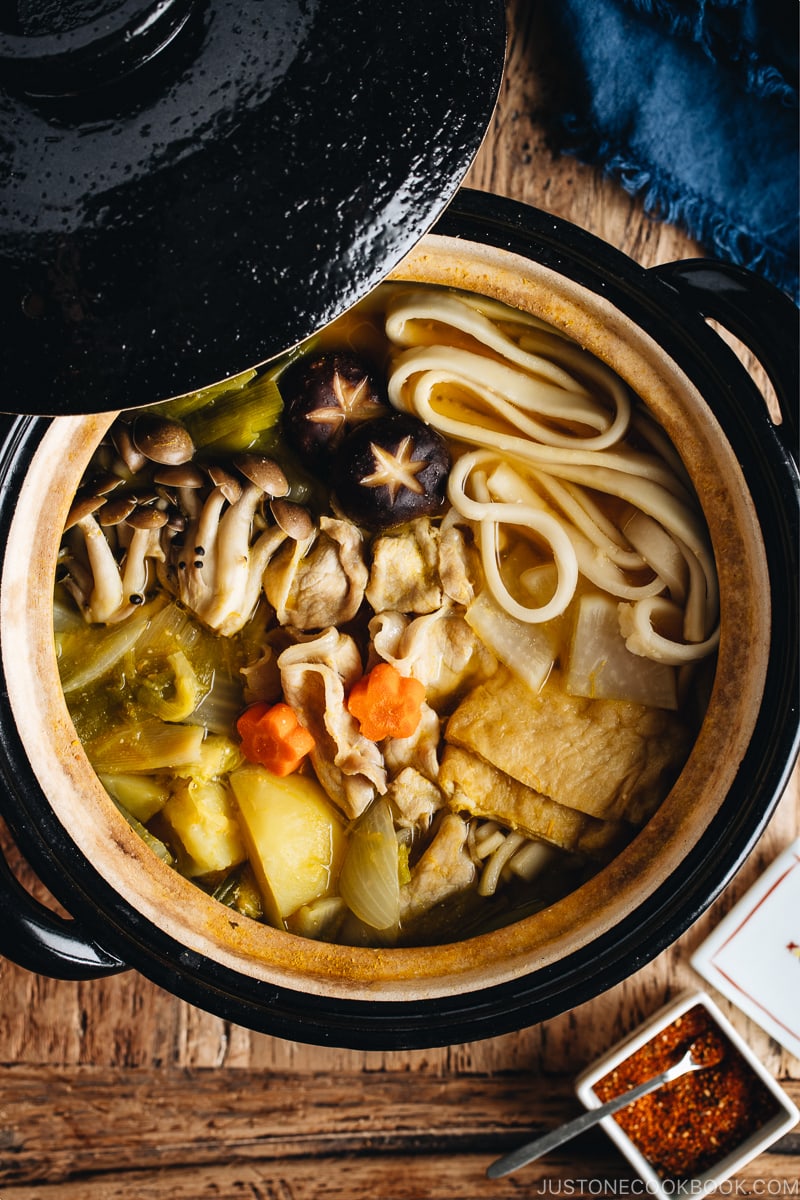
For the past several years, my family has visited Yamanashi prefecture a number of times. Yamanashi is in the proximity of Tokyo and Yokohama where my family lives, and the convenience brought us to a few different ryokans (Japanese-style inns) to enjoy delicious food and onsen (hot springs).
On each trip, we got to enjoy the famous regional noodle soup called Hoto (pronounced as [Hōtō]). This hearty, homey, rustic noodle soup is especially comforting in winter months and I couldn’t wait to share the recipe after our recent trip in January.
What is Hoto?
Hoto (ほうとう, 餺飥) is a miso-based noodle soup that originated in Yamanashi, Japan. It’s known as a regional food from Yamanashi, and it consists of vegetables (especially kabocha squash), meat, and noodles in a dashi broth that is seasoned with local Koshu (甲州) or Shinshu (信州) miso.
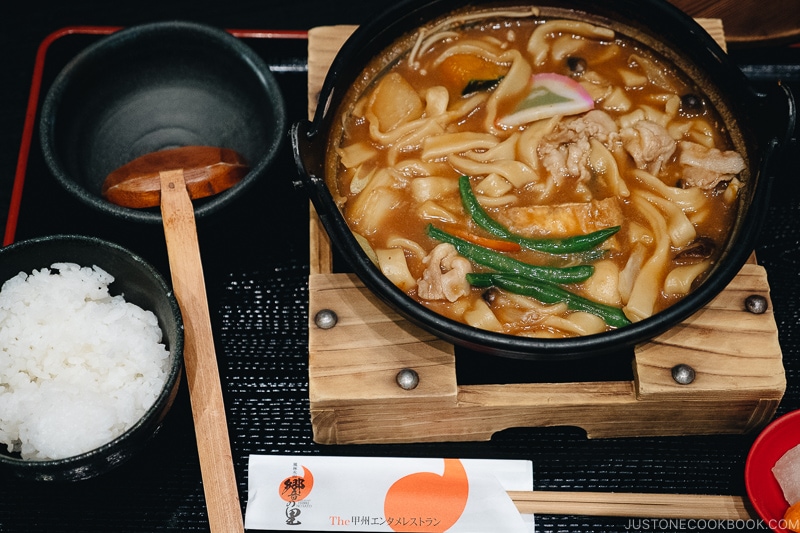
The noodles in this soup are a bit different from udon noodles. The dough has a tougher texture and is not mixed with salt or left to sit. Hence, the noodles are more doughy and lack of elasticity. It has a lot more similarities to dumplings than noodles.
Since these noodles are not required to be parboiled prior to adding to the soup, they are cooked raw in the soup along with the other ingredients.
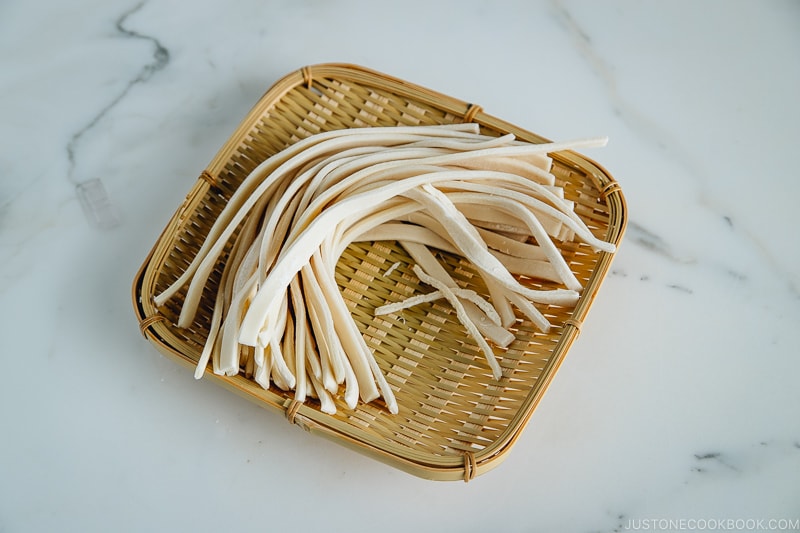
The origin of Hoto was due to shortages in local rice crops. The rice fields in Yamanashi were turned into wheat farming, and flour products like hoto noodles were invented to counter food scarcity.

Ingredients You Need for Hoto Noodle Soup
This home-style noodle soup is a lot more flexible when it comes to ingredients. You can use what you have in the fridge and it would work just fine. Fresh hoto noodles are impossible to find outside of Yamanashi prefecture, so some people use udon noodles instead. You can also make hoto noodles from scratch. All it needs is flour and water. Be sure to check out the Notes section in the recipe below if you’d like to make the noodles yourself. It’s easier than you think!
Proteins of your choice:
- Pork
- Chicken
- Tofu
Vegetables
- Kabocha squash
- Carrot
- Negi (long green onion) or leek or green onion
- Daikon radish
- Potato
- Napa cabbage
- Any seasonal vegetables
Others
- Aburaage (deep-fried tofu pouch)
- Shiitake mushrooms
- Shimeji mushrooms
- Hoto noodles
- Dashi (Japanese stock) – I used both kombu dashi and anchovy stock (iriko dashi) in flavoring the broth as it is how it’s done traditionally. Anchovies lend a stronger and more flavorful broth but feel free to use other dashi that is available. For vegetarians, you can use kombu dashi or/and shiitake dashi.
- Condiments (miso, sake, mirin)
In Yamanashi, you’d find hoto noodles being served in an iron pot, which keeps the noodles and soup hot. At home, I use my versatile donabe (Japanese earthenware pot) to cook and serve the dish. No donabe? You can certainly use any soup pots (heavy cast iron or clay pots are best).
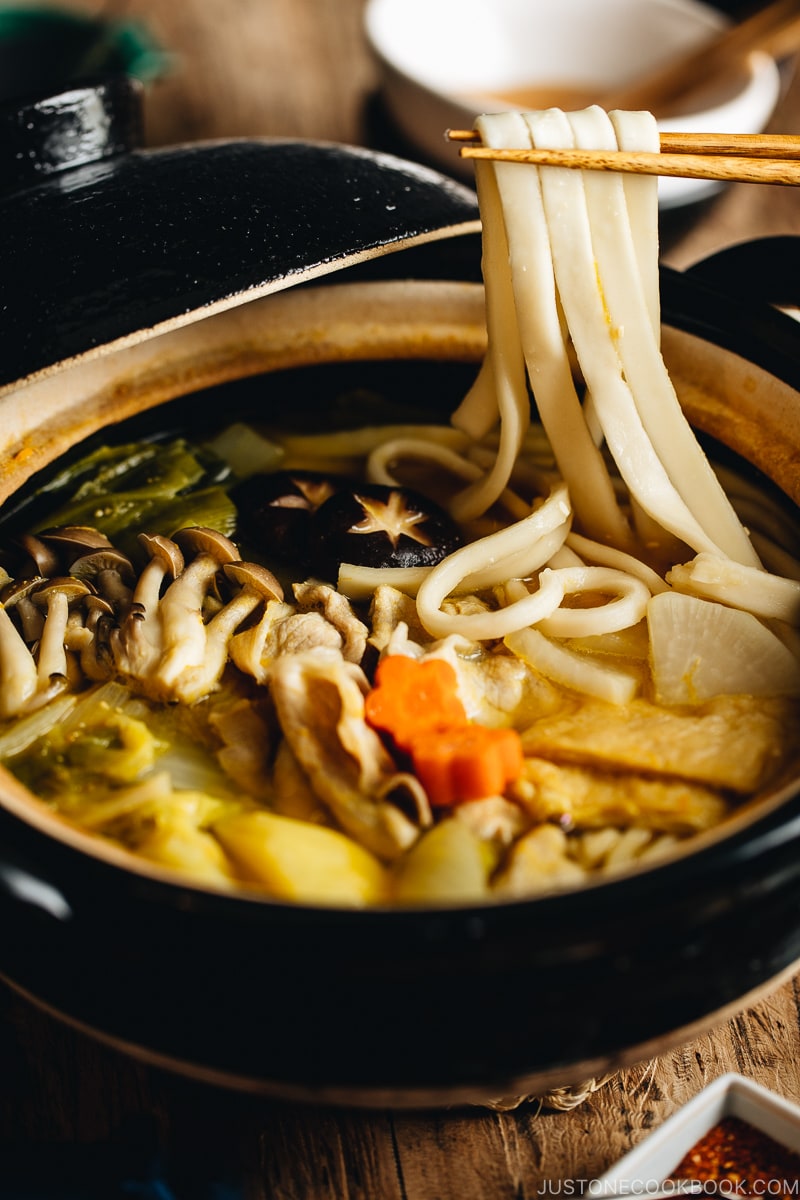
Mutenka Enjuku Koji Miso for Hoto Noodle Soup
The main flavor for the noodle soup is dashi made with anchovies and kombu, which is seasoned with local miso.
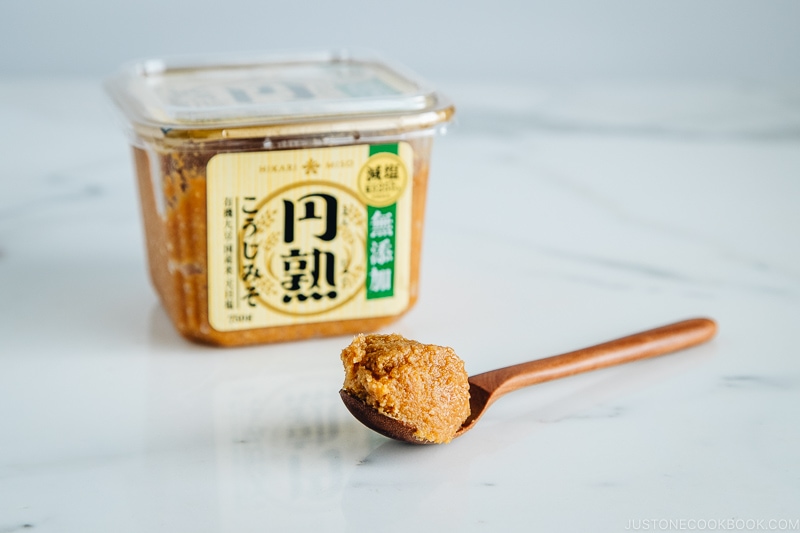
Mutenka Enjuku Koji Miso (with a green label) from Hikari Miso® contains 25% less sodium than Mutenka Enjuku Koji Miso. It still has a full flavor and umami yet no food additives or preservatives are used in this genuine koji miso. It is so delicious, and it’s one of my favorite miso to enjoy in all types of recipes that require miso.
If you already have miso in your fridge, you can definitely use it for the broth before you venture into other types of miso. You can read all about miso to be familiar with different types of miso.
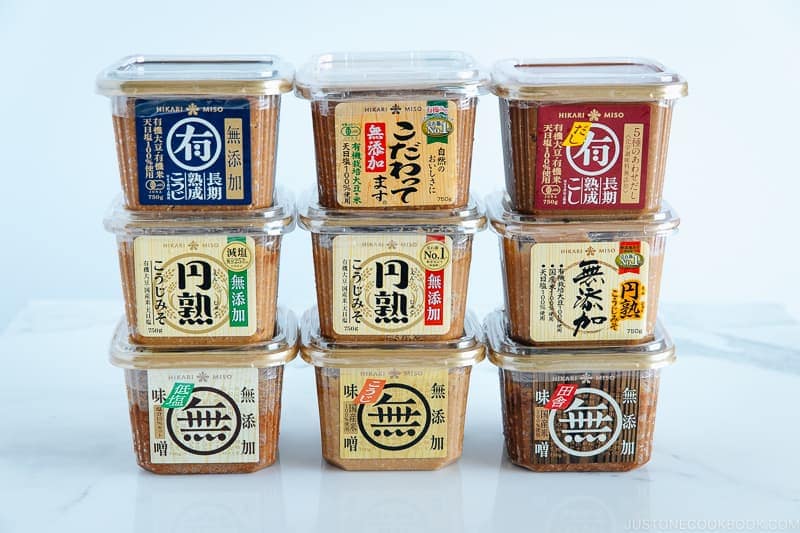
Where can I buy Hikari Miso®?
- Japanese grocery stores (Nijiya, Mitsuwa, Marukai, local mom-pop shops, etc)
- Asian grocery stores (including Chinese/Korean grocery stores)
I have been using all kinds of miso from Hikari Miso® for over a decade, and I enjoy the partnership with them. Thank you Hikari Miso® for sponsoring this post!
Explore Japan’s Regional Foods
Part of the fun of visiting Japan is the endless opportunity of trying out its multifaceted regional foods. And the great news is – you can recreate these flavors at home with the regional food recipes I’ve shared on Just One Cookbook. I hope you enjoy making Hoto Noodle Soup, and if you have any recipe requests for Japan’s regional food, just leave a comment below!
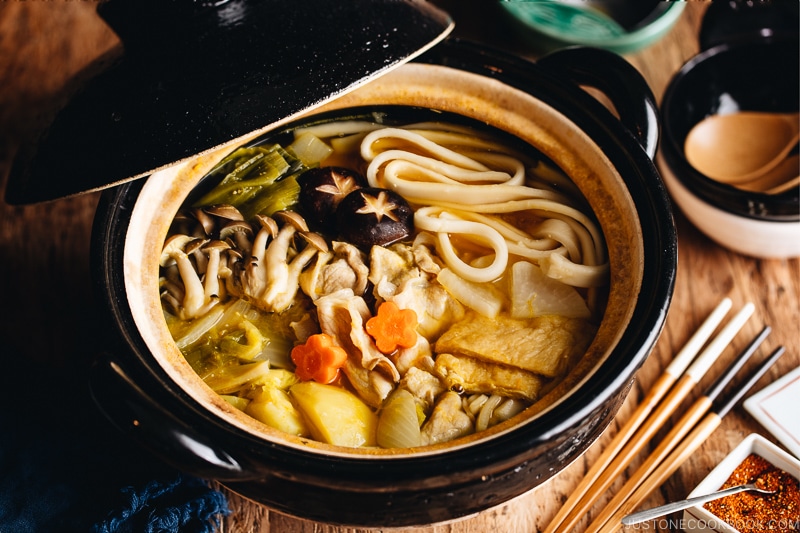
Wish to learn more about Japanese cooking? Sign up for our free newsletter to receive cooking tips & recipe updates! And stay in touch with me on Facebook, Pinterest, YouTube, and Instagram.
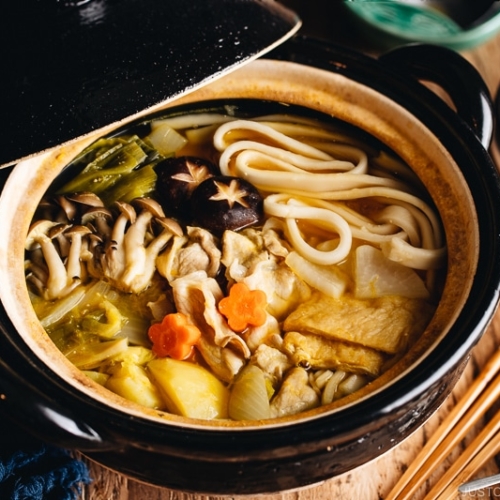
Hoto Noodle Soup
Ingredients
For the Dashi (anchovy + kombu)
- ¾ cup iriko/niboshi (boiled and dried anchovies) (skip for vegan/vegetarian)
- 1 piece kombu (dried kelp) (5 g; 1½ x 3½ inches, 4 x 9 cm per piece)
- 5 cups water
For the Ingredients
- ⅛ kabocha squash (6.3 oz, 180 g with seeds)
- 4.2 oz daikon radish (1½ inches, 3.8 cm)
- ⅓ carrot (4.2 oz, 120 g)
- 1 Yukon gold potato (5.2 oz, 148 g)
- ¼ onion (1.5 oz, 43 g)
- 2 leaves napa cabbage (6 oz, 170 g)
- ½–1 leek (or Tokyo negi/long green onion)
- ½ package shimeji mushrooms (1.8 oz, 50 g)
- 2 shiitake mushrooms
- 1 aburaage (deep-fried tofu pouch) (or you can buy crispy fried tofu puffs from an Asian grocery store; blanch them first to get rid of excess oil)
- 6 oz sliced pork loin
- 7.8 oz hoto noodles (uncooked) (or 18 oz, 500 g frozen sanuki udon noodles or make homemade hoto noodles; see Notes)
For the Seasonings
- 4 Tbsp sake
- 2 Tbsp mirin
- 5–6 Tbsp miso
- Diamond Crystal kosher salt (to taste)
To Serve
- shichimi togarashi (Japanese seven spice) (for a spicy kick)
Instructions
- Gather all the ingredients.

To Make the Dashi
- Soak 1 piece kombu (dried kelp) in 5 cups water in your Hoto Noodle Soup pot. Here, I use a donabe.

- Remove the heads and guts of ¾ cup iriko/niboshi (boiled and dried anchovies) and discard. If you’re not sure where the gut is, it’s the black area inside the belly. This will reduce the bitter flavor in the dashi.

- Put the cleaned anchovies (the left pile in the image) in a tea bag or cheesecloth.

- Add the bag to the water and kombu, cover, and slowly bring it to a near boil on low heat.

- Once almost boiling, remove the kombu and continue to cook the anchovies for another 10 minutes. Skim off the foam and scum from the stock while cooking. After 10 minutes, remove the bag of anchovies. Set aside.

To Prepare the Ingredients
- Remove the seeds of ⅛ kabocha squash and cut it into 1-inch cubes.

- Peel and cut 4.2 oz daikon radish into half lengthwise and cut into half-moon slices ¼ inch thick. Then, cut them in half to make quarter circles.

- Cut ⅓ carrot into rounds ¼ inch thick. If you‘d like, you can cut the rounds into a flower shape (hanagiri).

- Cut 1 Yukon gold potato into small chunks and cut ¼ onion lengthwise into ½-inch slices.

- Cut 2 leaves napa cabbage into smaller pieces, especially the bottom tougher part of the leaves.

- Cut ½–1 leek into 2-inch pieces. Cut each tube piece into quarters lengthwise.

- Cut off the bottom of ½ package shimeji mushrooms and 2 shiitake mushrooms.

- [Optional] You cut a decorative flower shape on the caps of the shiitake mushrooms called shiitake hanagiri.

- Pour boiling water over 1 aburaage (deep-fried tofu pouch) to remove the oil. Cut it into 4 pieces.

- Now, all the ingredients are ready to cook.

To Cook the Hoto
- Heat the dashi over medium heat. Start cooking the tough vegetables first, such as the leeks, onion, daikon, bottom white part of the napa cabbage, potatoes, kabocha, and so on.

- Once boiling, add 6 oz sliced pork loin (separate each slice).

- Add 4 Tbsp sake and 2 Tbsp mirin. Bring it to boil. Once boiling, add the rest of the ingredients and 7.8 oz hoto noodles (uncooked).

- Bring it back to a boil again and skim off the foam/scum as you cook.

- Add 5–6 Tbsp miso (varies depending on the type of miso) and continue to cook on simmer until the noodles and all the ingredients are cooked through, about 10–15 minutes.

- Always check the flavor. Add Diamond Crystal kosher salt to taste and add more miso if necessary. Serve hot and enjoy! We usually bring the donabe to the table with a portable gas burner stove and serve into individual bowls. Sprinkle with shichimi togarashi (Japanese seven spice) if you like it spicy.

Notes
- In a large bowl, combine 200 g all-purpose flour and 90 g water. Only if necessary, add a little bit of water. Transfer to a working surface.
- Knead until the dough becomes smooth texture and form a ball. Transfer back to the bowl and cover with plastic wrap for 10 minutes.
- Sprinkle the working surface with the extra flour and divide the dough into 2. Flatten each dough with the heel of your hand and roll out the dough using a rolling pin. The thickness should be 3-4 mm.
- Sprinkle flour on the working surface and fold the sheet of the dough into thirds or fourths and cut into 1 cm thickness.
- Divide the noodles into 2 (one half for this recipe, the other half for the next batch of hoto – make sure to sprinkle extra flour so noodles don’t stick together).
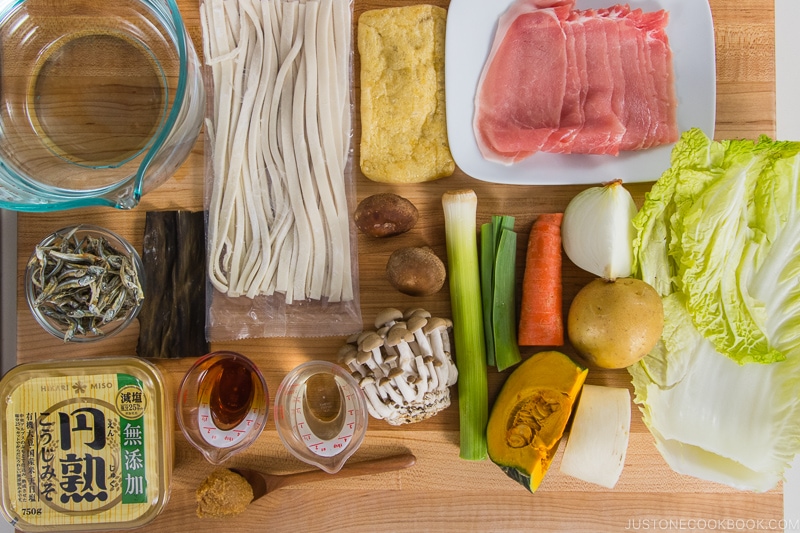
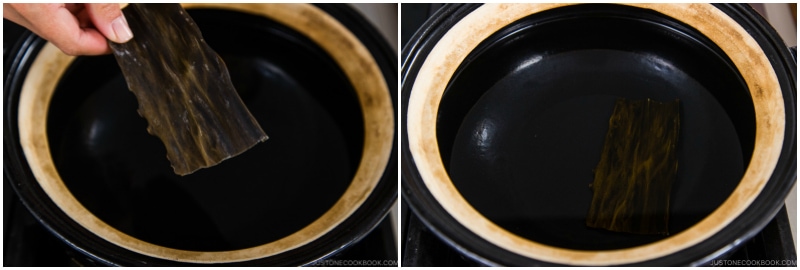
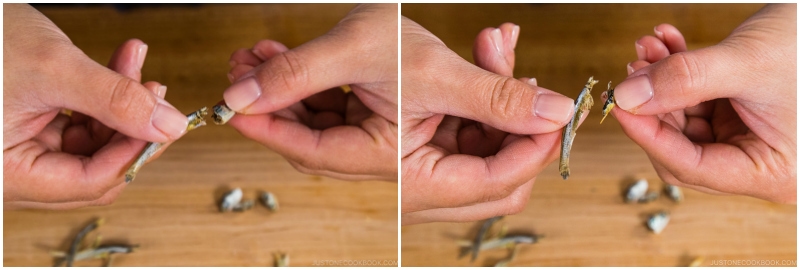

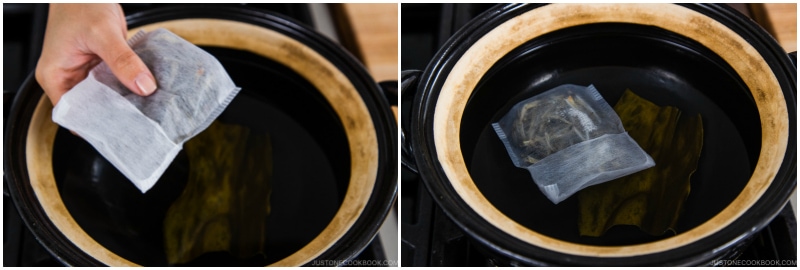



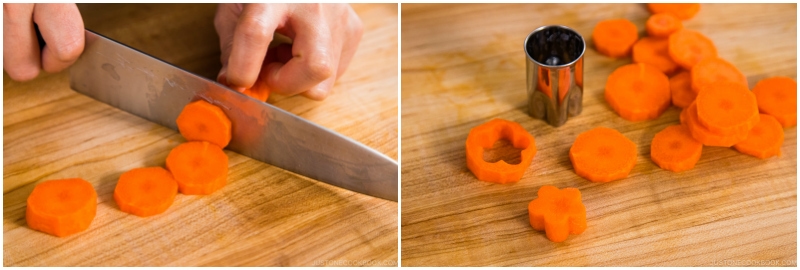


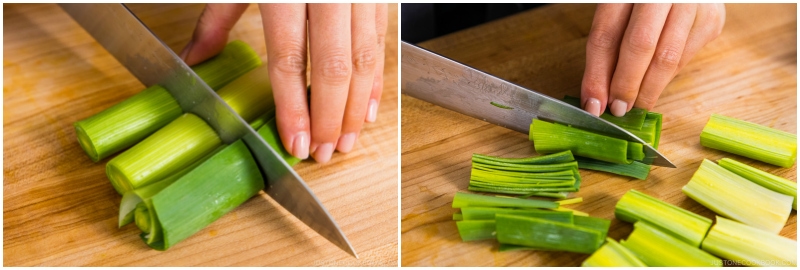
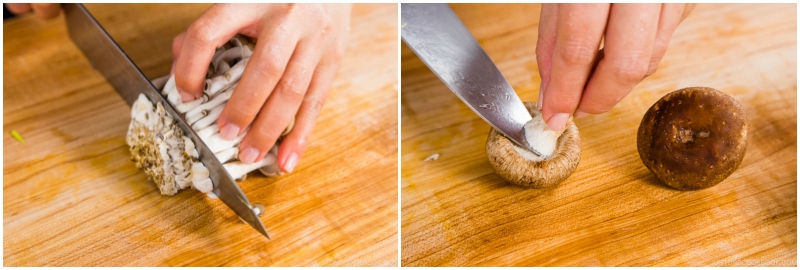

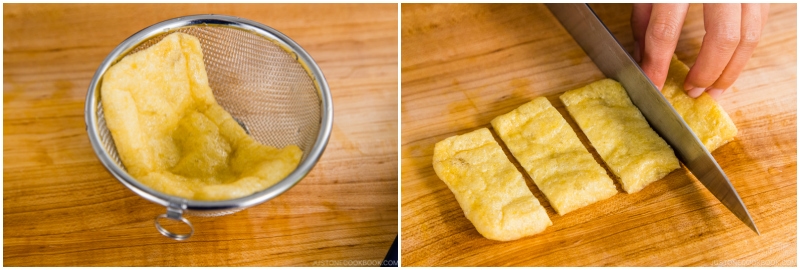
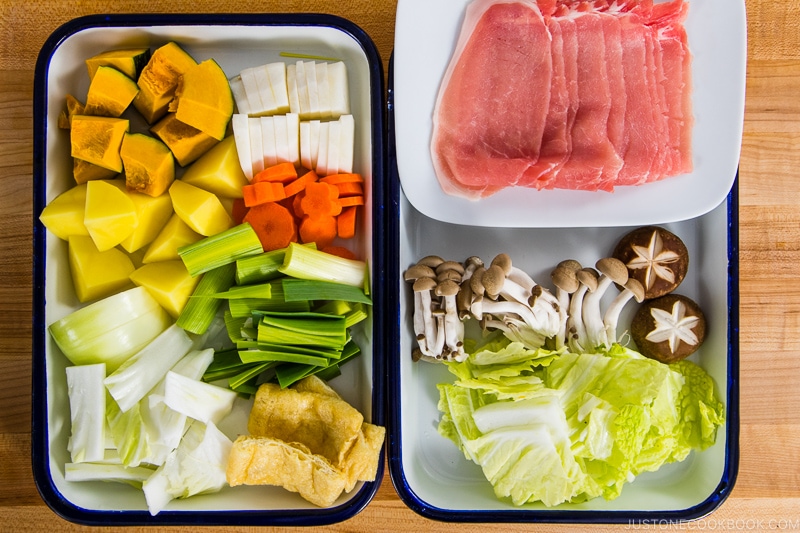

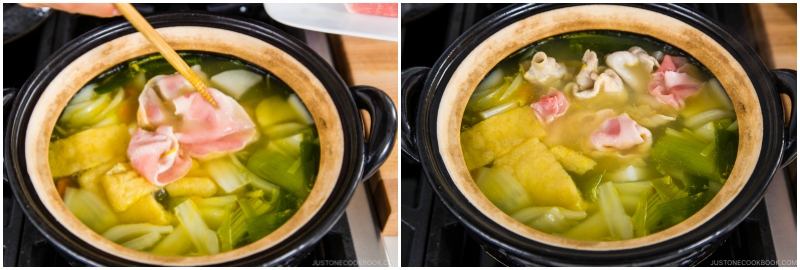

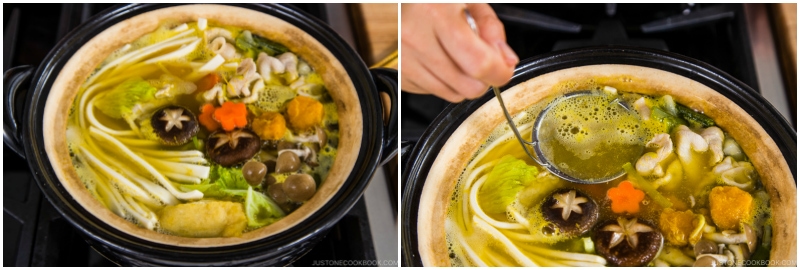
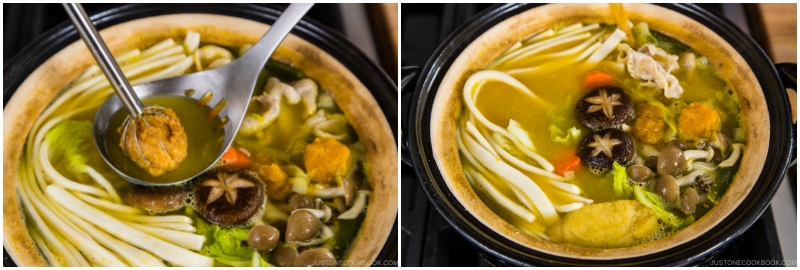
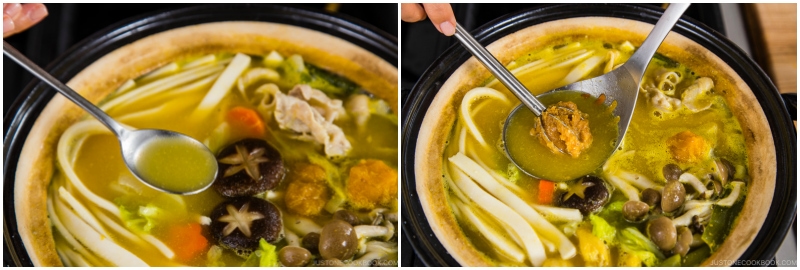










ahhh thank you! I missed Hoto and had no idea how to make it.. this will be fun 🙂
Hi Nate! We are glad to hear this recipe came just at the right time.
We hope you enjoy making homemade Hoto noodles from Nami’s recipe!🤗
Extremely happy to find your instruction. After my first installment of the 5 day series, I have the ingredients to make miso soup. Delicious. I want to try hoto as it is cold outside and seems just right.
But I cannot eat wheat, and even the udon noodles I can find have wheat in them.
Can you please suggest a rice based noodle to substitute?
Hi Barbara!
Thank you very much for your kind feedback.
The rice-based noodle that we can suggest is Vermicelli or Rice noodle.
We hope you can enjoy this soup!
Wonderful! The whole family loved this recipe, which we doubled no problem. We were also able to find dried sardines/anchovies that had already been de-headed and gutted, so it made the prep super simple. Also, we ran out of miso, so only used about 3 Tablespoons, so we added a little soy sauce and still was delicious – the Dashi itself was so flavorful. We will make again next week to use the rest of the frozen noodles in the package.
Hi Courtenay!
Wow! Thank you very much for trying this recipe and your kind feedback!
We are so happy to hear it turned out great and you and your family enjoyed it!😊
Hi Nami! I ‘m Veronica from Italy. I am a big fan of Japanese cuisine and I made this soup tonight for dinner… amazing! I fall in love with this recipe…thank you!
Veronica
Hi Veronica! I’m so happy to hear you tried this recipe in Italy! Thank you so much for your kind feedback. 🙂
Alright I have made this recipe twice. The first time was a disaster because I added too much kombu (made it taste like chemicals), and then I also overcooked the entire thing resulting in kabocha meltdown and total mushy chaos.
But then after a brief meltdown and a 7 day cool-down period of failure, haha, I was ready to try again. I bought a pre-made dashi powder since I literally can NOT get dashi right with any recipe. I followed the directions to a “T” other than that and voila…the most authentic and perfect dish I have ever made. I feel so proud of this meal, and I am so happy to know what it’s SUPPOSED to taste like. This meal was an adventure to me, but I feel one step closer to understanding Japanese food.
Thank you so much, I really loved making this.
Hi Carrie! Awww your feedback was really funny and fun to read! And I’m so glad to hear you enjoyed this recipe. I was worried when I started reading your comment and what an adventure! I’m super excited as you! Thank you for re-trying this recipe!
As for dashi, I want to help you! Not sure if you have read this, but here’s the main dashi guide: https://www.justonecookbook.com/how-to-make-dashi-jiru/
From there, each type of dashi has a recipe link. Please let me know how I can help you with dashi. Because homemade dashi will make even more amazing dish. 😉
This is now my favourite Japanese dish to make. It’s delicious, quick, simple and healthy. I will be eating this regularly from now on.
Hi Jasper! Awww! I’m so happy to hear you enjoyed this recipe! Thank you for trying it and for your kind feedback. 🙂
We’re doing veggie month and my place and, as such, aren’t eating any meat!
Could I substitute the pork for tofu?
I simply imagine it might be a little much since there is already a variant of tofu in the dish, but what do you reckon?
The recipe looks absolutely delightful!
I hope I’ll be able to find the more unique ingredients here in tiny Denmark (we don’t do a lot of Asian food, sadly)
Hi Ash! Yes, you can definitely substitute the meat with tofu. If your local Asian grocery store carries deep-fried tofu, use it for this recipe. It adds more flavors. You can use either puffy one (spongy when you squeeze) or harder one (the white part of tofu if pretty firm), both works just fine. Or use both! 🙂
I pick Chinese style as I assume you won’t be finding Japanese kinds…
Puffy one looks like this: https://images.app.goo.gl/MQKqX26sFtLqvHQz5
Hard one looks like this: https://images.app.goo.gl/8D6UP5QRzp4wpU4x5
I have been missing Japanese food in my daily life since I moved back to the UK but this recipe looked easy and it wasn’t hard to find the ingredients. So I decided to make it yesterday evening for my family, it went down extremely well! Can’t wait to make more of your recipes, thank you!
Hi Laura! Thank you so much for trying this recipe! I’m so glad to hear you enjoyed it. Thank you for your kind feedback! Hope you had a wonderful time living in Japan! 🙂
I lived in Yamanashi for two years and this was one of the first meals I had! It came with a huge shrimp and the best kabocha. I live in San Diego now and can’t seem to find hoto anywhere! Where do you recommend?
Hi Charlotte! We can’t find Hoto anywhere here in San Francisco too. I think this kind of regional food is impossible to find outside of Japan. Even in Tokyo, Hoto is not available unless the restaurant is focused on Yamanashi regional foods or something. 🙂
[…] Hoto – Noodle Soup from Yamanashi […]
I used to live in Yamanashi, in Kofu, so I was very excited to see you do Hoto!
Thank you for a delicious recipe from my home town that I can replicate in Australia 🇦🇺
Hi Nikki! You used to live in Yamanashi! That’s so neat. What was your favorite hoto and how was it made? 🙂
I’m in a process of cooking it. I already give 5 stars for flavor, but my question is:
Will it survive in fridge and how long?
I got chilled udon which i will cook separately and add to hot soup, no way udon will survive in soup for long even in fridge.
As changes i took taro instead of potatoes and doubled green onion and daikon because i love kabocha only in sweet dishes:((
Hi Asa! Thank you so much for trying this recipe! You can keep it till the next day. I wouldn’t keep it longer than that, especially if you eat from the pot on the first day. And yeah, noodles are not meant to keep for next day as they absorb moisture too much. I would add in a new batch of noodles. 🙂 Your replacement sounds perfect to me! Delicious!
It worked 100%. Main loss next day was just some color. Japanese soups are awesome! Every one I try to cook stays on rotation! Thank you very much for this site!
Hi Asa! Great to hear that! Thank you so much for your kind feedback. 🙂 xo
I saw your pictures and instantly had an overwhelming craving to try this. Just had a pretty heavily modified version and it was delicious. I used bonito dashi, miscellaneous fridge veggies, thinly sliced hot pot beef instead of pork, and fresh udon noodles, everything else was as- written. It was so satisfying!
Hi Julia! I’m so happy to hear that! It should be the one you made, this dish is a homey dish that people make at home with whatever you have going into the pot. Thank you for trying this recipe! Glad you enjoyed it!
We were visiting Lake Yamanakako and decided to stay for the illumination. As the weather we looked for something warm for dinner. We found, by chance, a restaurant that specializes in hoto. I cannot explain how fast we are that night because it was SO good!! I am looking forward to recreating it using your recipe.
Hi Julie! I’m so happy to hear you got to try this dish in Yamanashi! The miso based broth and thick noodles and all the hearty veggies really give comfort in winter months! Thank you so much for reading this post, and I hope you enjoy the recipe! xo